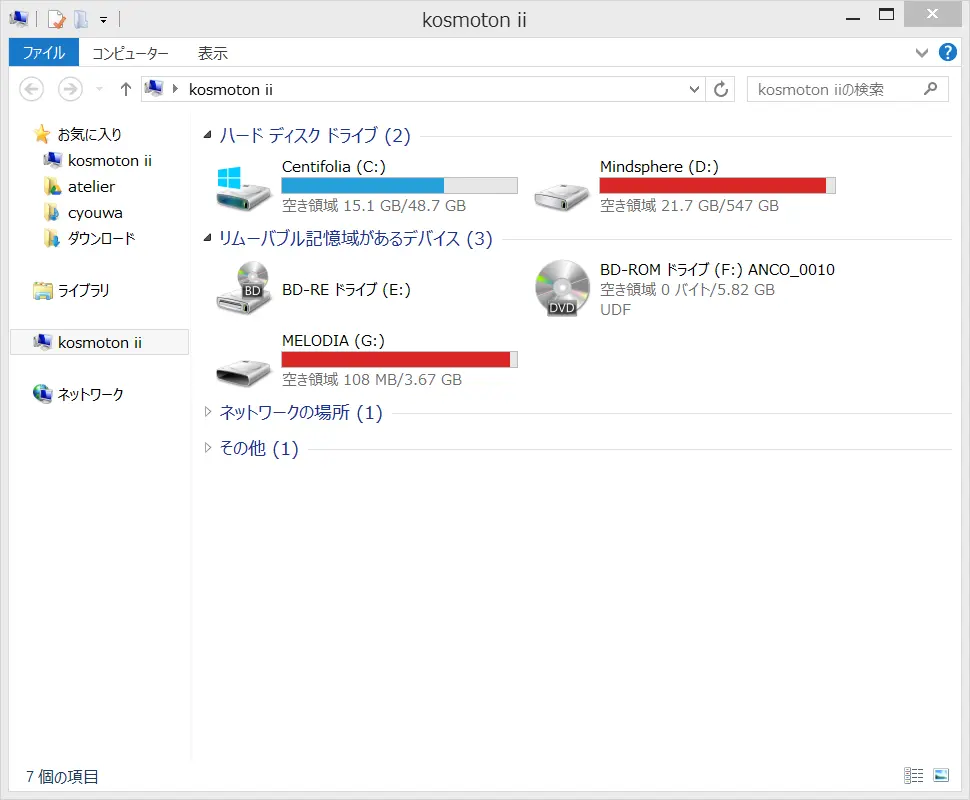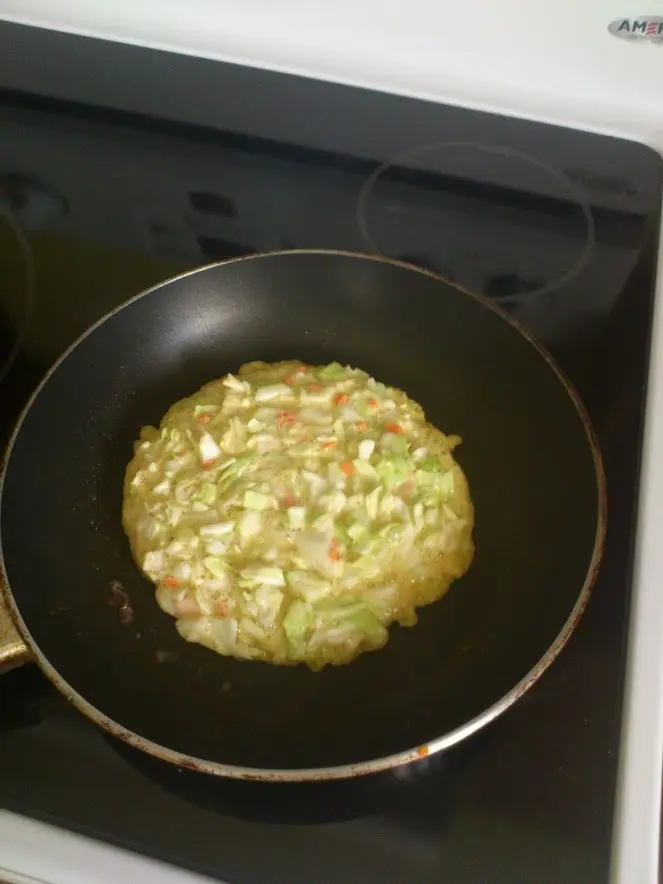No doubt, this is probably my first time being kiyo-ed at Haruka seriously.
After the rather dull September, this album for sure exicates me. I just got this album on Friday morning, and since then, I've been keeping the songs on and on and on for 2 days and I can definitely keep going.
My last being-kiyo-ed record should be in this March, when I played KOKIA's "Where to go my love?" for 500+ times. I may not be able to break that record this time, but I did get satisfied.
So, let's bow to shimotsukin haruka for this excellent music! m(_ _)m
After the rather dull September, this album for sure exicates me. I just got this album on Friday morning, and since then, I've been keeping the songs on and on and on for 2 days and I can definitely keep going.
My last being-kiyo-ed record should be in this March, when I played KOKIA's "Where to go my love?" for 500+ times. I may not be able to break that record this time, but I did get satisfied.
So, let's bow to shimotsukin haruka for this excellent music! m(_ _)m
What? You don't know what I'm talking about?

2013.10.09, 『レムルローズの魔女 (Remlerose's Witch)』
Official HP: http://www.fwinc.co.jp/music/remle_rose/

2013.10.09, 『レムルローズの魔女 (Remlerose's Witch)』
Official HP: http://www.fwinc.co.jp/music/remle_rose/
At the very first, this album sounds a bit like the old Sound Horizon, but this one is indeed much, much better than even the old Sound Horizon!
Project: Shimotsuki Haruka, Hiyama Nao (The perfect music-story combination!!)
Musicians involved are great too (although I had no idea about who Sakamoto Hideki is... ^^;).
Musicians involved are great too (although I had no idea about who Sakamoto Hideki is... ^^;).
1. 朱の月に唄う魔女 (The Witch Who Sings On the Crimson Moon)
Lyrics: Hiyama Nao, Music: Shimotsuki Haruka, Arrange: Hirota Yoshitaka
2. 虚空(そら)が朽ちるまで (Until the Hollow Sky Collapses)
Lyrics: Hiyama Nao, Music/Arrange: Shimotsuki Haruka
3. 映らない記憶 (Unseen Memories)
Lyrics: Hiyama Nao, Music/Arrange: MANYO
4. 呪われた姫君 ~忘却のレムルローズ~ (The Cursed Princess ~Remlerose of Oblivion~)
Lyrics: Shimotsuki Haruka, Music/Arrange: Sakamoto Hideki
5. 夜を待つ二人 (The Two Who Wait For the Night)
Lyrics: Hiyama Nao, Music: Shimotsuki Haruka, Arrange: Sakamoto Hideki
6. 死の舞踏会 (Ball of Death)
Lyrics: Hiyama Nao, Music/Arrange: Hirota Yoshitaka
7. 緋色の薔薇 (Scarlet Rose)
Lyrics: Hiyama Nao, Music: Shimotsuki Haruka, Arrange: MANYO
I couldn't recognise Yoshitaka's arrange/compose, but I did get MANYO's track 3 and most of Haruka's composing melody, which made me happy.
While listening to all these songs, even after days, I still keep exclaiming how amazing, gorgeous and perfect the songs are. So if you by chance see me, I'll always be with a blessed face, being drunk in Shimotsukin's marvellous world.
And, I CAN'T pick up my favorite track. They are equally great. So is the connection between every individual song. Tr.1 and Tr.2 bring the opening of story, Tr.3 is a link between "now" and "past". Tr.4 is in an epic-poem style telling, bringing us to the "past", and in Tr.5, it goes back to the normal timeline. Finally, Tr.6 concludes the story while Tr.7 is like a summary.
Then, the booklet is so well-designed. The illustrations triggered my nerve of moe again! But what's behind the illustrations? What's the story about the songs?--Everything is there in the lyrics; it's pretty straightforward comparing with Sound Horizon's written riddles--it doesn't mean I don't like hidden message! However, I'm not digging into the story. You should have fun to derive your own fantasy from the songs while reading the lyrics. If you don't understand Japanese, it's your fault~ :3
Haruka is perfect too! I mean her newest photo, found on Remlerose's HP.

GothLoli Harukaaaa!!!!! <33333333333

GothLoli Harukaaaa!!!!! <33333333333
Since everything is so perfect, I decided to buy myself a real copy.
....BUT THIS ALBUM IS TOO PERFECT TO ALLOW ME BUYING ONE!
Yesterday evening there were still 17 in stock on amazon, but this morning, when I was going to order it, it says it's out of stock and the next arrival is not set up..
WTH! Σ(゚Д゚;
I can only wait. Hope they get some in future soon. u_u
....BUT THIS ALBUM IS TOO PERFECT TO ALLOW ME BUYING ONE!
Yesterday evening there were still 17 in stock on amazon, but this morning, when I was going to order it, it says it's out of stock and the next arrival is not set up..
WTH! Σ(゚Д゚;
I can only wait. Hope they get some in future soon. u_u
†:.。.:゚:.。.:†:.。.:゚:.。.:†:.。.:゚:.。.:†:.。.:゚:.。.:†:.。.:゚:.。.:†:.。.:゚:.。.:†:.。.:゚:.。.:†:.。.:゚:.。.:†:.。.:゚:.。.:†
Another bad news, for some reason, the release of Akiko's Laylania 2013 concert DVD got delayed to next March. Fine, I still have KOKIA's DVD for this winter--haven't got time to watch all of them!
And the jacket of Turaida is out now.

This kind of colour scheme keeps ringing in my head about KAGAYA--especially the background purple-blue sky. Oh well, I shouldn't pick on such things, I'm a fan of KAGAYA. XD
Yet still... the jacket looks a little weird. Something about balancing the front and back colours but I can't explain.
I do perfer her RAKA/Harmonia much more. :P

This kind of colour scheme keeps ringing in my head about KAGAYA--especially the background purple-blue sky. Oh well, I shouldn't pick on such things, I'm a fan of KAGAYA. XD
Yet still... the jacket looks a little weird. Something about balancing the front and back colours but I can't explain.
I do perfer her RAKA/Harmonia much more. :P
Also, I'm not used to her short-cut yet (even it's not my first time seeing it). I keep thinking she's Nagi because of the hair! But, on the other hand, she looks perfect with this hairstyle. Because she sang for Saki in A.T.3, who has a quite similar hairstyle. lol
By all means, it's my own feeling that I can't imagine how she actually sings "EXEC_EP=NOVA/." (again, something hard to explain regarding to people's appearance and actions).
By all means, it's my own feeling that I can't imagine how she actually sings "EXEC_EP=NOVA/." (again, something hard to explain regarding to people's appearance and actions).
†:.。.:゚:.。.:†:.。.:゚:.。.:†:.。.:゚:.。.:†:.。.:゚:.。.:†:.。.:゚:.。.:†:.。.:゚:.。.:†:.。.:゚:.。.:†:.。.:゚:.。.:†:.。.:゚:.。.:†
Akiko (and Kokia too) will always satisfy us. So I have no worry about what I can listen to for the rest of October and the early November. But I also realised that my extreme love toward Haruka this time masked other nice works released around the same time. So guess I should give the rest of this post to those works.

Kalafina - アレルヤ
Thanks (?!) to Kara no Kyoukai, this song is definitely better than what I expected. I'm happy they didn't sing like a cheap Jpop that even an amateur artist can achieve, although the overall image isn't my favorite "dark song", it's okay, they were sing for a story so they might simply not be able to sing dark. But I'm not saying I like the rest songs. I have totally no comments for "dolce" and I don't like the live versions of "fairytale" (I didn't even try Tr.4 because that song is never in my fav list).
Alright, I'm not leaving. I'll go with you for a little longer anyway, like what I promised before. They'll have another single(?) in November for Madoka's new movie, but I'm not expecting too much for the music/song since I've got my lesson from the previous Madoka movies. I just wish the movie itself being good, the old one is nothing but a shortened TV flow!

Mitsumune Shinkichi - Rozen Maiden Original Soundtrack
That's the person who composed for "Shoujo Kakumei Utena"! I love the strings and piano in this work. I also appreciate that they didn't include the song used in anime this time. However, it would be nice if there are tracks for all dolls that are all under the naming style "roze of xxxxx".
Saying about Rozen Maiden, I haven't even touched the later episodes since I'm now in Detective Conan mode. Maybe I should do a little switch and move the finished stuff to the EHD.


